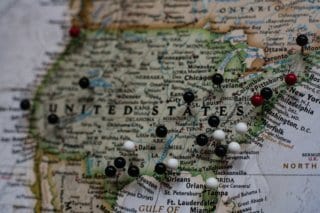
Can You Afford to Live the American Dream?
 The United States has always been a popular destination for people worldwide. The vast nation offers countless opportunities for those seeking work, adventure, or a fresh start – whether in small towns or bustling cities. However, the average cost of living in the U.S. can vary just as much as the country itself.
The United States has always been a popular destination for people worldwide. The vast nation offers countless opportunities for those seeking work, adventure, or a fresh start – whether in small towns or bustling cities. However, the average cost of living in the U.S. can vary just as much as the country itself.
If you're wondering whether the U.S. fits your budget, here’s a breakdown of what you can expect to pay for housing, food, healthcare, entertainment, transportation, and more.
The United States has always been a popular destination for people worldwide. The vast nation offers countless opportunities for those seeking work, adventure, or a fresh start – whether in small towns or bustling cities. However, the average cost of living in the U.S. can vary just as much as the country itself.
If you're wondering whether the U.S. fits your budget, here’s a breakdown of what you can expect to pay for housing, food, healthcare, entertainment, transportation, and more.
Is the United States Expensive?
According to 2025 data from Numbeo, the United States is the 13th most expensive country in the world, and ninth when you factor in the cost of living and rent.
Living costs in the U.S. vary significantly from coast to coast. While small towns and rural areas tend to be more affordable, major cities like New York and San Francisco have significantly higher price tags.
Housing, transportation, and healthcare are key factors in determining which cities rank among the most and least expensive places to live.
Despite the overall high ranking, opportunities to live more affordably are plentiful, especially in less densely populated areas where costs are much lower.

Find the Best International Insurance
- Compare multiple quotes and coverage options
- Work with an insurance expert at no additional cost
- Find the best plan for your needs and budget
The Most Expensive Places to Live in the U.S.
If you're considering living in one of the U.S.'s major cities, you should be prepared for high costs, especially in the most sought-after locations.
Below is an overview of some of the priciest cities where housing, transportation, and general living expenses are at their peak (note, all dollar amounts are in USD):
New York, New York
By most standards, New York City is a place like none other. But living in the Big Apple doesn’t come cheap, and its high cost of living can put it out of reach for many people. New York City has the highest cost of living of any city in the United States, about 9% higher than the country’s second most expensive city, San Francisco.
The average cost of living for a single person is $1,700 per month, excluding rent. The average monthly rent for a one-bedroom apartment in the city center ranges from approximately $3,000 to $5,400. Meanwhile, a similar-sized property on the outskirts is around $2,000 to $4,500.
San Francisco, California
Gorgeous San Francisco has some of the most iconic U.S. landmarks, including the Golden Gate Bridge, Alcatraz Island, and Fisherman’s Wharf. It’s a beautiful and diverse community where cable cars still transport passengers up and down its hilly streets. However, safety can be an issue, especially in districts like Tenderloin and The Castro.
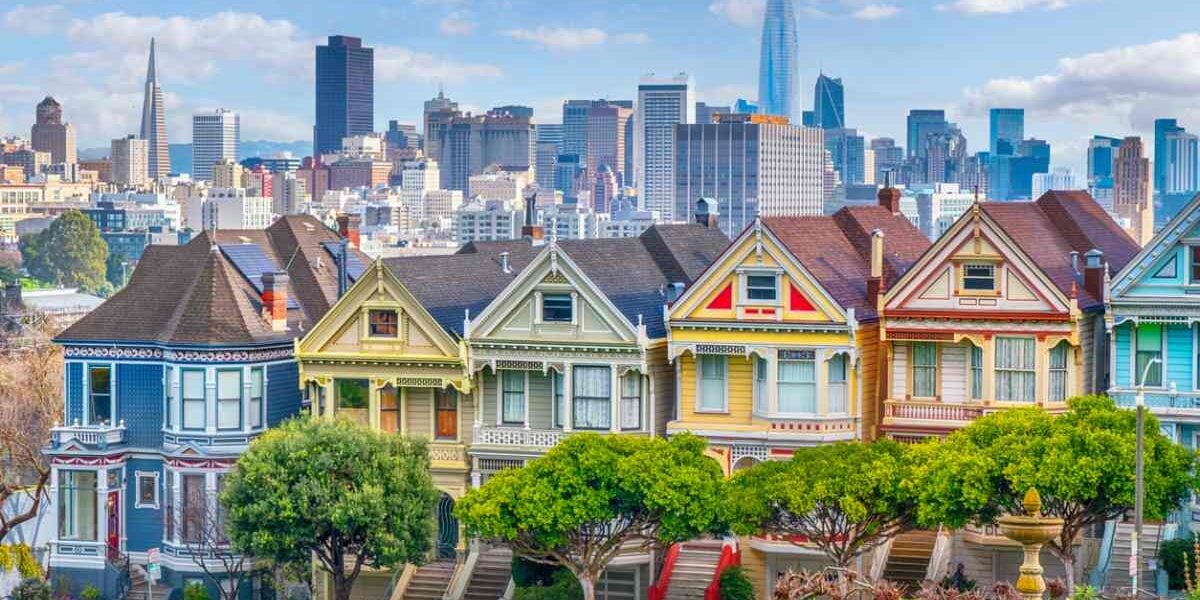
The average monthly cost of living for a single person is $1,550, not including rent. The average monthly rent for a one-bedroom apartment in the city center is around $2,700 to $4,000. Outside the city center, a one-bedroom apartment costs $2,500 to $3,500 per month.
Honolulu, Hawaii
Hawaii is home to breathtaking natural wonders and gorgeous beaches. Located 2,400 miles off the coast of California, it feels like a world apart from the continental U.S. It’s not just a dream for expats – it’s also a paradise for many Americans seeking a different way of life.
Situated on the south coast of Oahu island, Honolulu is Hawaii’s capital city. It’s known for its iconic Waikiki Beach and popular hotels and restaurants, but it can be overrun by tourists.
The average rent for a one-bedroom apartment in the city center ranges from $1,800 to $2,750 per month, while outside the city center, it ranges from $1,500 to $2,200 per month.
Boston, Massachusetts
Boston is a quintessential East Coast city rich with history. While smaller than other eastern cities like New York and Philadelphia, it has everything to offer.
This enthusiastic sports town is also home to some of the best universities and hospitals in the entire country and has a dynamic drinking and dining scene. The city was also instrumental in the American Revolution and its famous Tea Party.
The average cost of living for a single person is $1,470 per month, excluding rent. Renting a one-bedroom apartment costs between $2,300 and $4,000 per month in the city center and between $2,000 and $3,000 outside the center.
Washington, DC
The nation’s capital is densely populated yet geographically small, making DC a one-of-a-kind place at the heart of law and politics in the U.S. Here, you can hobnob with celebrities and politicians – you might even spot a president or two!
Home to the Smithsonian museums – which offer free admission – DC is nestled along the border of Virginia and Maryland, offering ample access to beaches, hiking trails, mountain towns, and vineyards.
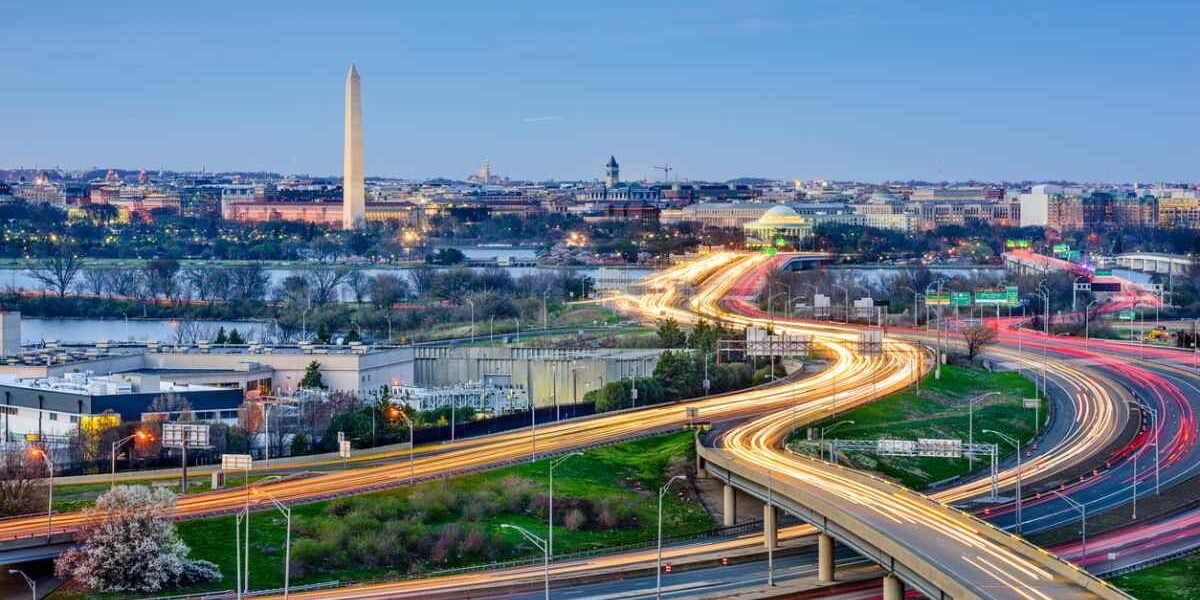
The average cost of living for a single person per month is $1,400, excluding rent. The average monthly rent for a one-bedroom apartment in the city center is $2,000 to $3,400 and between $1,800 and $2,600 on the outskirts.
Read More: The Most Expensive Cities in the World
The Most Affordable Places to Live in the U.S.
If you’re thinking of moving to the United States but are on a budget, several small towns and rural areas in the country’s most affordable states – Mississippi, Kansas, Missouri, Oklahoma, West Virginia, Iowa, Arkansas, and Alabama – offer a lower cost of living than the cities mentioned above.
Here are five great cities with populations of 200,000 or higher that have some of the lowest living costs in the United States.
Boise, Idaho
Boise is a small northwestern city with a population of just over 235,000. Nestled among scenic mountains, it offers a relaxed pace of life, much slower than the hustle and bustle of big coastal cities like New York and Los Angeles.
Known for its stunning outdoor experiences and a strong sense of community, Boise is a haven for those seeking adventure and a more connected, slower way of life.
The average monthly cost of living for a single person is $1,065, excluding rent. Rent for a one-bedroom apartment in downtown Boise ranges from $1,500 to $2,000, while outside the city center, it typically falls between $1,200 and $1,750.
Houston, Texas
Americans say, “Everything’s bigger in Texas,” but that’s not true of the cost of living. Cowboy culture meets big city life in Houston, where you can enjoy museums, cultural activities, and a fantastic food scene – much like the country’s largest cities – alongside a small-town vibe and close-knit community. Houston is undoubtedly one of the great American cities of the South.
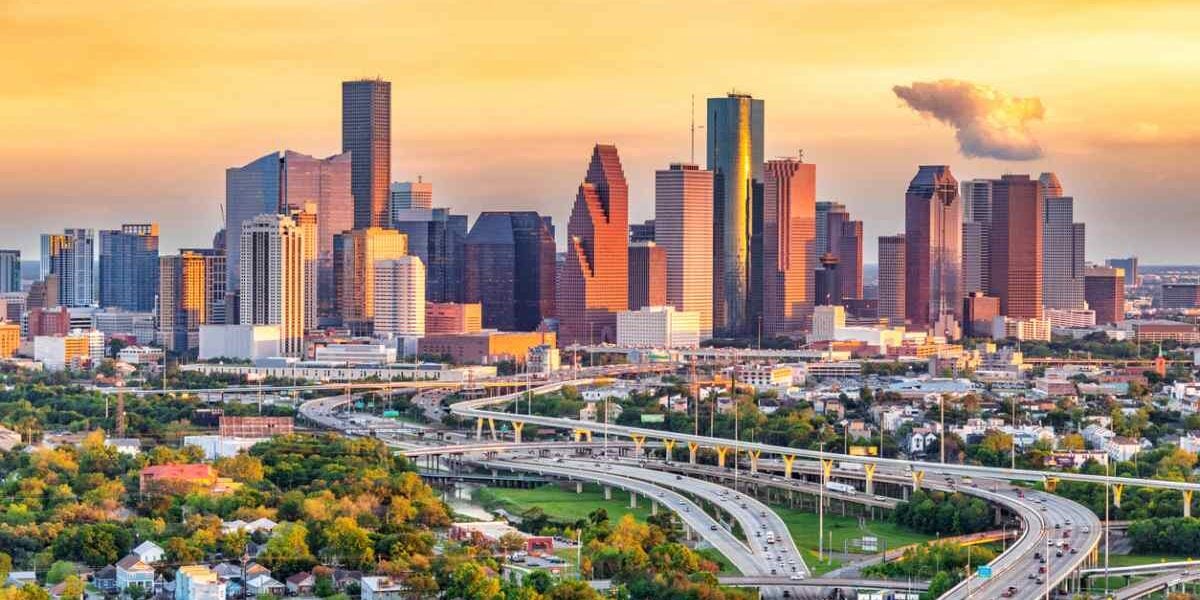
The average cost of living for a single person is $1,122 per month, not including rent. The average rent for a one-bedroom apartment in the center of Houston ranges from $1,220 to $2,000 per month and between $900 and $1,600 outside the center.
San Antonio, Texas
Best known as the site of The Alamo – where the famous battle of the Texas Revolution took place – San Antonio boasts a vibrant art scene and is renowned for its Tex-Mex cuisine. It’s also home to Texas’ only UNESCO World Heritage site, the San Antonio Missions, and a minor league baseball team.
The average cost of living for a single person per month is $1,045, not including rent. The average rent for a one-bedroom apartment in the center of San Antonio is $1,175 to $2,000 per month. Meanwhile, outside the city center, the average monthly rent for a one-bedroom ranges from $900 to $1,500.
Austin, Texas
With its famous tagline, "Keep Austin Weird," this Texan city is sure to be barrels of fun. Austin is known for its incredible live music scene, up-and-coming tech hub, and for hosting the Formula 1 United States Grand Prix.
With a population of just under a million, this lively yet compact city boasts a relatively low cost of living, attracting many young professionals and couples from across the state and country.
The average cost of living for a single person is $1,106 per month, not including rent. The average rent for a one-bedroom apartment ranges from $1,750 to $3,200 in the center of Austin and from $1,250 to $1,850 on the outskirts.
Salt Lake City, Utah
With a modest population of 200,000, Salt Lake City is an amazingly tranquil place to live if you love the snow. The mountain town is a popular winter sports destination and also hosts the famous Sundance Film Festival. It’s also a liberal enclave in politically conservative Utah.
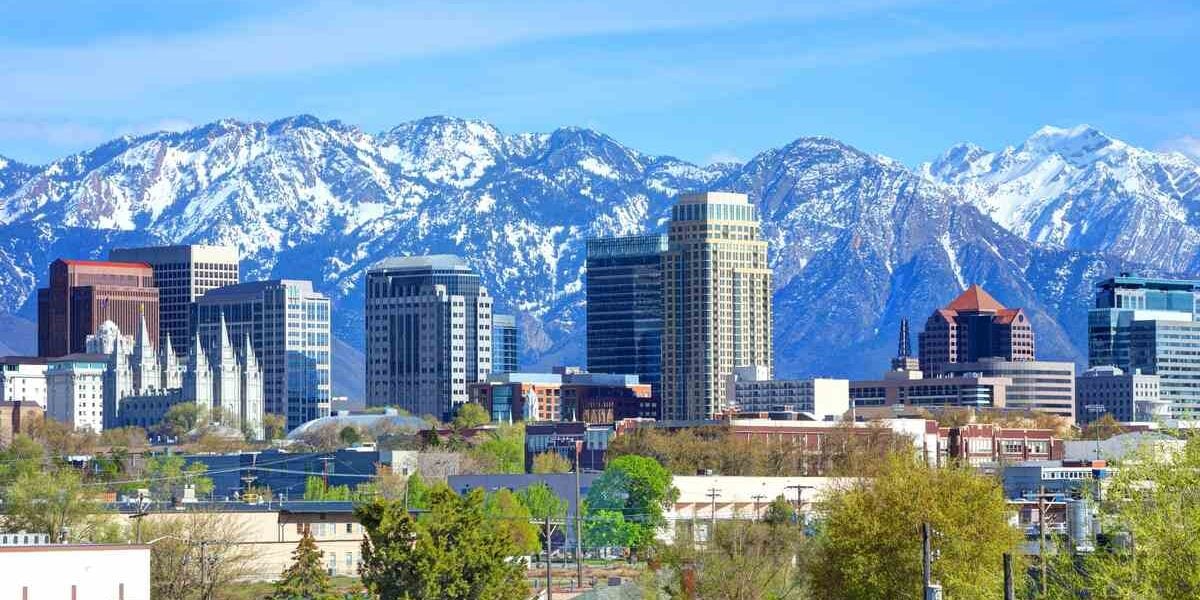
The average cost of living is $1,135 per month, excluding rent. A one-bedroom apartment in Salt Lake City costs $1,300 to $2,000, while a similar-sized property outside the center ranges from $1,150 to $1,600.
Read More: The Cheapest Countries to Live in Around the World
The Average Cost of Living in the U.S.
The average cost of living for a single person in the United States is $1,165 per month, excluding rent. As you might expect, the most expensive cities in America tend to have the highest rent prices.
Housing Costs in the United States
Finding affordable rentals in and around big cities can be challenging. Typically, there are fewer affordable apartments than hopeful renters, so make sure to prepare all your documents ahead of time and move fast when you find an appealing rental.
The following sites are a great place to start your house hunt:
- Apartments.com – A popular site for finding apartments, houses, and condos for rent.
- Zillow – Offers a wide range of listings for both renting and buying properties.
- Trulia – Known for its detailed information and neighborhood insights.
- Realtor.com – A comprehensive site for buying, renting, and checking home values.
- Rent.com – Great for rental listings with filters for different types of housing.
- Redfin – Offers detailed maps and real-time updates on available properties.
- HotPads – A user-friendly site with advanced filters for searching rental listings.
A one-bedroom apartment typically costs between $1,100 and $3,982 per month to rent. The West Coast and Northeastern regions, which include cities like Philadelphia, Boston, San Francisco, and Los Angeles, are generally the most expensive.
Get our monthly newsletter filled with tips and information for people living, moving, and traveling outside of their home country.* *By submitting your email, you agree to receive monthly updates for expats, digital nomads, retirees, and more.
Rental Costs Across the U.S.
Rent generally costs slightly less in the Midwest, home to cities like Indianapolis and Chicago, and across the Southern states. Below are some reference ranges for rent for a one-bedroom apartment in major cities in the United States.
Northeast/Mid-Atlantic
- Philadelphia, Pennsylvania: $1,400 to $2,330
- Jersey City, New Jersey: $2,300 to $4,400
West Coast
- Los Angeles, California: $2,000 to $3,000
- Portland, Oregon: $1,400 to $2,200
Southwest
- Scottsdale, Arizona: $1,700 to $2,500
- Albuquerque, New Mexico: $900 to $1,300
Southeast
- Jacksonville, Florida: $1,300 to $2,100
- Huntsville, Alabama: $1,200 to $1,900
Midwest
- Kansas City, Missouri: $1,100 to $1,600
- Omaha, Nebraska: $1,200 to $1,800
Don’t forget to budget for household expenses. Here’s a breakdown of the average monthly costs for everyday essentials, including mobile and internet service:
- Utilities (electricity, heat, and water): $125 to $375
- Internet: $50 to $105
- Cell phone: $30 to $100
Food and Entertainment Costs in the United States
If you’re planning a move to the U.S., here’s what you can expect to pay for groceries, restaurant meals, and entertainment:
- Meal for one person at an inexpensive restaurant: $12 to $38
- Three-course meal for two people at a mid-range restaurant: $50 to $150
- Domestic beer: $3.75 to $9
- Two cinema tickets: $25 to $40
- Fitness club membership for one person: $20 to $145
- One gallon of milk: $0.50 to $2
- One dozen eggs: $1.90 to $6.70
- One kilogram of chicken: $5.50 to $21.60
- Bottle of wine (mid-range): $9 to $24
- 1 kilogram of potatoes: $1.10 to $6.60
Transportation Costs in the United States
In the U.S., you’ll likely need a car to get around small cities and rural areas. However, big cities and metro areas often have public transportation systems that make a car-free lifestyle possible.
Additionally, many cities have invested in cycling infrastructure, making bikes a practical and eco-friendly option for short commutes.
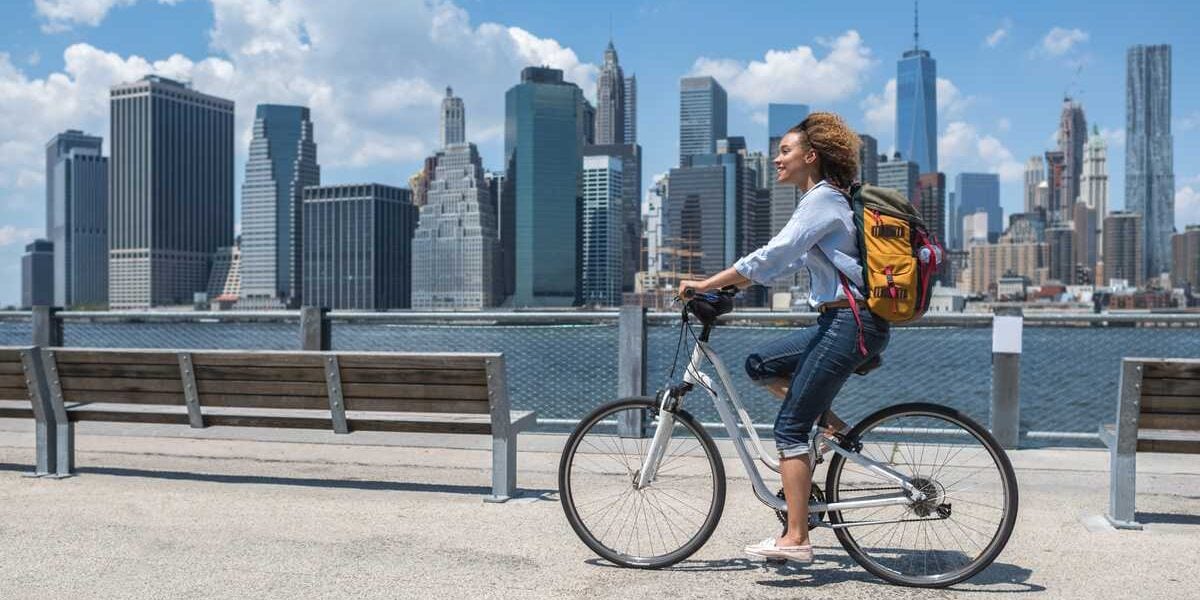
That said, having your own vehicle can still be handy for getting around outside cities like New York, Boston, and Washington, D.C.
Here’s a look at average transportation costs countrywide:
- A one-way ticket on public transportation: $1.25 to $4
- A monthly pass for public transportation: $38 to $132
- Cost of a Volkswagen Golf (or equivalent car): $23,830 to $36,050
- Liter of gasoline: $0.74 to $1.37
In big cities like New York, owning a car comes with high extra costs. A monthly parking pass typically ranges from $510 to $625, with some Manhattan neighborhoods charging as much as $1,200 per month per car. Tolls for bridges and tunnels into and out of the city are also expensive, averaging $17.63 per entry.
The Cost of Education in the United States
The United States provides free public education for all students, from kindergarten through grade 12. However, expats looking to enroll their children in private or international schools should be prepared for hefty tuition fees.
For example, tuition at an international primary school can range from $12,000 to $40,000 per year per child. Due to the high cost of private schooling, 81% of American students attend public schools.
Americans often face challenges with the high cost of childcare. According to Child Care Aware of America, the average household spends $11,600 annually on childcare per child.
This is significantly higher than in many other Western countries, such as Sweden and Germany, where annual childcare costs average around $1,600 and $2,100, respectively.
Read More: How to Choose the Right International School
Healthcare Costs in the United States
Healthcare costs in the U.S. are notoriously high, making it home to the most expensive healthcare system in the world.
Many Americans have faced financial hardship or even bankruptcy due to medical bills, often because they lack sufficient insurance or have no coverage at all. These stories are all too common and highlight the serious affordability challenges many people encounter.
Health Insurance Options in the U.S.
Options like Medicaid, the Affordable Care Act (ACA), and private health insurance are available to help manage these costs. As an expat, securing private international health insurance is crucial to avoid the staggering expenses associated with U.S. healthcare.
While paying for private U.S. health insurance can be costly, many residents find partial or full coverage through their employer or by applying for federal income-based assistance.

Legal permanent residents (LPRs) in the U.S. can qualify for federal Health Insurance Marketplace benefits. Those temporarily residing in the U.S. on non-immigrant visas or other forms of protected status may also qualify.
It’s important to check income qualifications to see if you're eligible for insurance coverage and tax credits. If you don’t qualify, you might need to purchase a global medical plan.
LPRs may also apply for Medicaid assistance and children's health insurance if they meet state residency and income requirements. Medicaid covers emergency care for those who meet state criteria, even if they lack federally eligible immigration status.

Find the Best International Insurance
- Compare multiple quotes and coverage options
- Work with an insurance expert at no additional cost
- Find the best plan for your needs and budget
Importantly, applying for these benefits does not affect one's path to a green card or U.S. citizenship, except in cases where long-term, government-funded institutional medical care is involved.
For those using insurance through the federal Health Insurance Marketplace (the Affordable Care Act), average monthly premiums range from $430 to $525 per person.
If you're considering moving to the U.S., contact International Citizens Group for a free health insurance quote.
Read More: US Health Insurance for Non-Citizens
Living in the US: Is Anything Free?
While most things aren’t free in the United States, there are still plenty of opportunities to enjoy food, entertainment, and experiences without spending a dime.
Here are a few examples of things that might be free in certain places:
- Museums: While some museums in the U.S. are always free, many offer free admission on specific days of the week or month, and some are free for children. Certain museums, like New York’s Metropolitan Museum, even allow local residents to pay what they wish for admission.
- Access to Green Spaces: Most public parks and beaches are free to visit, but some may require a small entry fee to cover the cost of cleaning, maintenance, and lifeguards.
- Entry to National Parks: While some national parks charge entry fees to help cover maintenance costs, most parks across the U.S. offer free entry.
- Non-Alcoholic Beverage Refills: Most restaurants and fast-food chains offer unlimited free refills on non-alcoholic drinks throughout your meal.
- Public Libraries: Public libraries provide free access to books, movies, internet services, events, and workshops. They are an excellent resource for both education and entertainment, and all you need to do is register for a library card.
- Community Events: Many cities host free events such as outdoor concerts, festivals, farmers' markets, and movie nights, especially during the summer.
- Art Galleries and Street Art: While some galleries charge admission, many offer free exhibitions or installations, particularly in public spaces or as part of community events.
- Wi-Fi: Coffee shops, libraries, and public spaces often provide free Wi-Fi, making it easy for digital nomads and locals to stay connected.
Of course, the true beauty of the United States isn’t just about receiving free stuff. It’s about embracing freedom, seizing job opportunities, and creating the lifestyle you want for yourself and your family. And wherever you choose to call home, the U.S. offers the chance to turn the American Dream into a reality.


